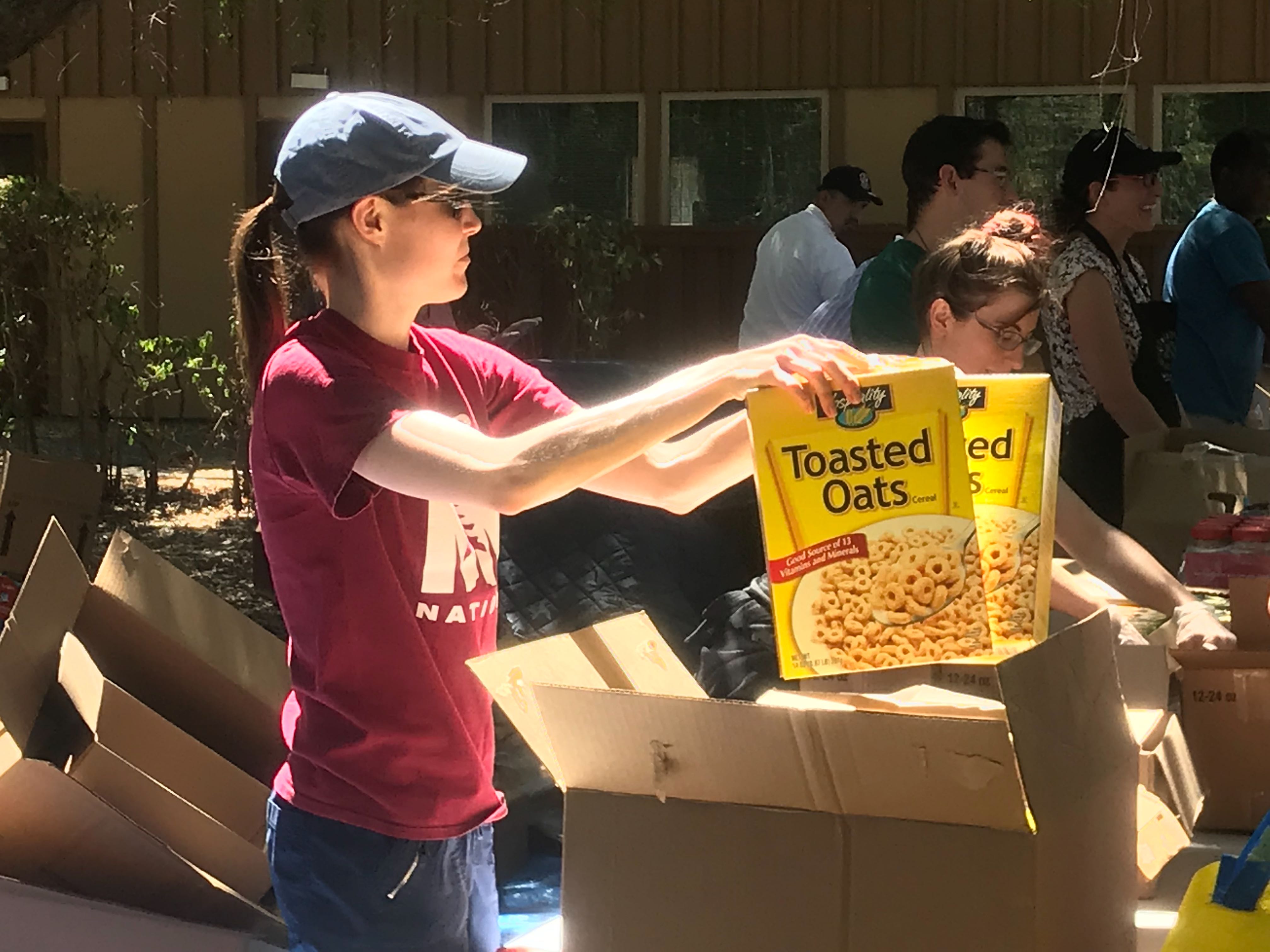From stone fruits and peanut butter to whole wheat spaghetti, 150 pounds of food per household was offered to Stanford students who self-identified as food-insecure on Aug. 26, the first of three pilot visits by the Second Harvest of Silicon Valley food bank.
Though the event was scheduled for 1 to 2:30 p.m., the majority of students seeking food were lined up near the event’s start time, and almost all were gone halfway through the allotted time. More than four dozen volunteers from the Stanford community, including undergrads, grad students and Residential & Dining Enterprises (R&DE) staff helped unload and unpack crates and boxes.
The pilot is in collaboration with R&DE, the Graduate Student Council (GSC), Associated Students of Stanford University (ASSU) and Stanford Solidarity Network (SSN). Second Harvest will return to deliver food to Stanford’s campus on Sept. 23, and then again on Oct. 28. Since the August delivery took place during the sparsely populated summer quarter, the amount of food delivered was relatively low, said Second Harvest Partnership Manager Luz Ayala.
She told Stanford News that, “If this works out, and we can get the clients and the volunteers to show up, we want to do [food deliveries] twice a month.”
“For right now we only sent for like 100 families,” Ayala told The Daily. “We know the next month it’s gonna grow … That’s why we ask people to sign up or sign in, so that way we know we’re sending enough for them.”
At a March GSC meeting, the Council predicted that Second Harvest would come to Stanford within two weeks. However, due to liability issues, students were unable to arrange a partnership with the food bank themselves. It was not until months later, after this mistake was realized, that Stanford administrators reached out to Second Harvest.
“There’s a process we have to follow,” Ayala said. “There are agreements that have to go to the right person. We have to hear back from their district. There is a lot of liability involved.”
According to Ayala, who has been with Second Harvest for more than 10 years, the pilot at Stanford is similar to those that have taken place at other universities. Second Harvest serves every public college in San Mateo County and Santa Clara County, she said. In recent months, the food bank has expanded to private schools including Cogswell Polytechnical College and Samuel Merritt University.
Students who signed up for food at the event were asked to self-report information on their income and the number of individuals in their household, among other details.
“We want to capture the size of the families,” Ayala said. “We can use those numbers to know how much food to order and send, but it also helps us for writing grants.”
After the August event, attendees were invited to return for additional food that was left over. The remaining food was distributed to R&DE hourly staff and to the R&DE food donation partner A La Carte. R&DE did not respond to multiple requests for comment.
“We weren’t surprised that Stanford reached out,” Ayala said. “Silicon Valley is one of the most expensive places to live … even for families that are working full-time jobs, it’s so hard to make ends meet.”
The food bank is only one method students have considered for addressing campus food insecurity. Grace Achepohl ’20, now the ASSU Executive Co-Director of Affordability, has called for a meal swipe sharing program through which students could donate their dining-hall credits to others in need. But after conversations with graduate students and R&DE representatives, she decided a pantry-like program would be a better fit.
“Stanford has lots of resources, and we need to be vigilant about getting Stanford to allocate those resources to the graduate student population,” Achepohl previously told The Daily. “We understand that this food pop-up is not going to solve all those affordability issues; we are in the midst of Silicon Valley, which is one of the most expensive zip codes in the country. But we need to do something.”
Achepohl’s ASSU affordability co-director and sixth-year Ph.D. student Irán Román, who is also a member of SSN, said Stanford needs to do more to address campus food insecurity.
“Stanford has to raise the wages for its student workers,” he previously told The Daily. “This is life support; this is not the solution of the problem. It’s helping people who otherwise would be in very serious trouble, like me when I was food insecure.”
Contact Holden Foreman at hs4man21 ‘at’ stanford.edu.
